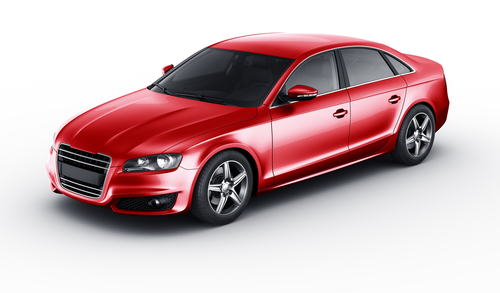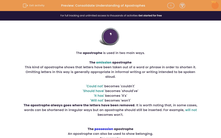The apostrophe is used in two main ways.
The omission apostrophe
This kind of apostrophe shows that letters have been taken out of a word or phrase in order to shorten it. Omitting letters in this way is generally appropriate in informal writing or writing intended to be spoken aloud.
'Could not' becomes 'couldn't'
'Should have' becomes 'should've'
'It has' becomes 'it's'
'Will not' becomes 'won't'
The apostrophe always goes where the letters have been removed. It is worth noting that, in some cases, words can be shortened in irregular ways but an apostrophe should still be inserted. For example, will not becomes won't.
The possession apostrophe
An apostrophe can also be used to show belonging.
For example:
Sam's house
The dog's bone
The company's logo
.jpg)
The apostrophe is usually placed before the 's' when something is connected with one person (singular). However, if there were two dogs or more than one company (plural), the apostrophe would be placed after the 's'.
For example:
The dogs' bones
The companies' logos
For words which already end in the letter 's', it is technically correct to add an apostrophe and an extra 's'.
For example: Jones's Bakery or Thomas's car.
One huge tip when using apostrophes to show possession ..... check that the apostrophe works by using a finger to cover the apostrophe and everything that comes after it. If the apostrophe is in the correct place then you should be left with the name of the owner.
For example:
In 'the children's school', the apostrophe is correct because if you cover the apostrophe, you're left with the owner - children. If it had said 'the childrens' school' it would have been wrong because the owner would be childrens - which isn't a word!

Also, in 'James's car' the apostrophe is correct because the owner's name is left if you cover the apostrophe - James. If it had been 'Jame's car' it would be wrong because the owner would be Jame - which isn't a name!

It's and Its:
Be careful with these two words as they can be confusing when it comes to apostrophes.
It's is a shortened version of it is.
Its is a possessive pronoun and does not have an apostrophe.
The owner took his dog for its walk.
.jpg)
Now it's time to consolidate what we've learned!








